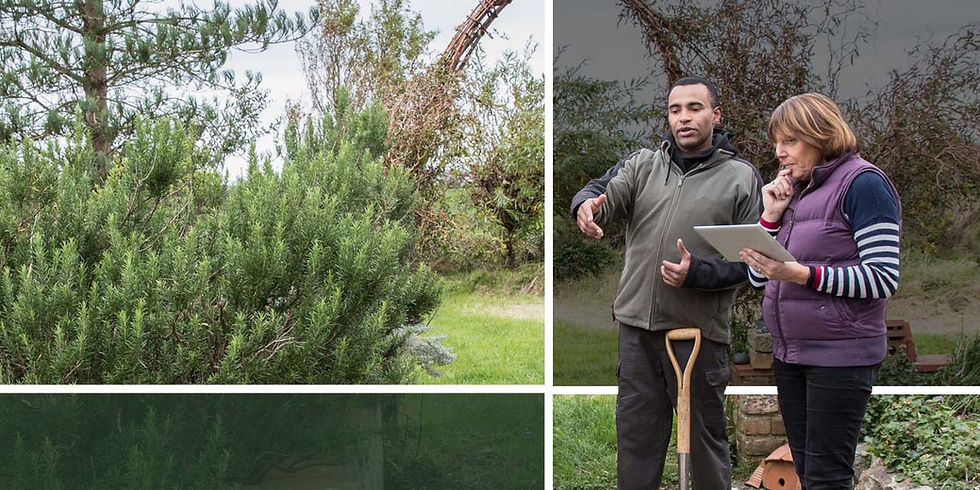How to properly edge a flower bed
- Rooted in Nature

- Aug 3, 2020
- 3 min read
Updated: Apr 30, 2024

Flower bed edging is a landscape detail that can really make a difference in the look and presentation of your garden. When you create a distinct border around your flower beds, you make your yard look pristine and well-groomed. Edging can also help keep grass and lawn weeds from invading your carefully cultivated flowers.
You can edge your garden bed in many different ways. Depending on the methods and materials you choose, the finished product may look soft and relaxed or crisp and formal. Here’s how to edge a flower bed to create a border that reflects the effort you put into your garden.
Select your edging tool
Traditional low-cost options include a spade, half-moon edger, or manual rotary. However, a mechanized tool with a circular blade is the easiest way to cut a clean line at a consistent depth into the edge of your lawn.
Mark & cut the edge
To establish a boundary between your lawn and garden bed, lay out a string or mark the grass with spray paint. Then, cut around the flower bed with your chosen edging tool. Remove the loosened soil and grass with a shovel to reveal a crisp, clean edge.
Finishing
Now you must decide how you want the finished edge to look. Some of the most popular options for how to edge around a flower bed include:
Trench edging: The simplest option is to create a natural edge with an unlined trench. After cutting the edge, top the garden bed with mulch. As you approach the grass line, slope the mulch downward to create a two- to three-inch trench. This results in a crisper edge than laying the mulch flush with the grass.
Metal or plastic edging: To create more of a physical separation between your lawn and the garden bed, install a long strip of edging material. Aluminum is a stiff, lightweight, rust-resistant metal, making it great for this purpose. Plastic is a lower-cost alternative that provides a similar appearance.
Bricks or concrete pavers: If you’re concerned about grass creep, a thick, paved border could be an attractive option. After cutting the edge, dig a trench wide enough to house bricks or concrete pavers. Line the bottom of the trench with paver base followed by stone dust to create a foundation. Install the bricks and pound them into place with a rubber mallet. Fill the joints with polymeric sand, sweep off the pavers, and hose them down with water to activate the sand and lock the bricks in place.
Raised stone border: A raised edge is the most impressive way to define your garden. This option works best if you’re installing a new bed, as you will need to add soil to elevate it to the level of the short stone wall surrounding it. A raised border is also ideal for sloped landscapes because it creates flat terrain where you can plant your garden.
Maintain the edge
Now that you know how to get a good edge around flower beds, the final step is to maintain it with edging and trimming throughout the growing season. This involves cutting the lawn where your mower can’t reach and redefining the vertical edges around your garden bed as required.
Need help edging your Maryland flower beds? Contact Rooted in Nature at 443-846-0199 or info@rootedinnaturemd.com.



Comments